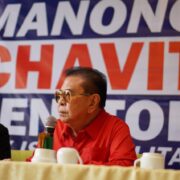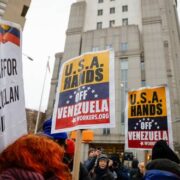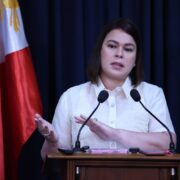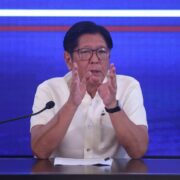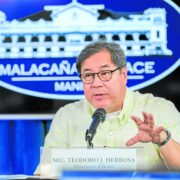National Greening Program: Boosting Forest Cover for Flood Prevention

It’s so alarming to see the pervasive and large-scale corruption in the implementation of flood mitigation projects in the country.
While the government is focusing on prosecuting the culprits in flood mitigation contracts and protecting our ravaged lowlands, let us also not lose sight of the urgent need to mitigate the causes of pervasive floodwaters and soil erosion.
We need to pursue a serious long-term, holistic approach to the lowland flooding problem by focusing on upland approaches that would address the effects of intensifying rainfalls amid the challenges of the global climate change phenomenon. We need to revitalize the National Greening Program initiated by the late president Benigno “Noynoy” Aquino III in 2011 and continued by former president Rodrigo Duterte under the Enhanced NGP or ENGP. It’s a program aimed at increasing forest cover, improving food security, reducing poverty, and addressing climate change challenges.
The ENGP convergence initiative between the DENR, DA, and DAR focuses its attention on the anthropocentric causes of the volume of water and soil descending from the uplands to the lowlands. Offhand, these causes have to do with the unabated and widespread deforestation of our watersheds and mountain ranges due to agricultural expansion, illegal logging, kaingin (slash and burn agriculture), mining, urban expansion, forest fires, and tourism activities. These are happening because of the inaccessibility of the uplands, the lack of forest guards and forest rangers, and the apathy of local and national government units, as well as the general public.
The ENGP also engages the participation of the private sector, people’s organizations and LGU communities in reforestation and forest protection. There are still 5.3 million hectares that need to be reforested out of the ideal reforestation target of 12 million hectares, as recommended under the Master Plan for Forestry Development.
The reforestation mobilization effort should employ what is called watershed forestry. This approach involves vegetative techniques such as broadleaf tree planting, silviculture, agro-forestry, vegetable cultivation, and grassland establishment, as well as structural measures, such as terracing, contour farming, bund construction, sediment basins, engineered waterways, storm water detention systems, and riparian buffer restoration.
To make the ENGP more effective, the DENR’s Bantay Gubat program should be revitalized as it involves not only the department’s forest rangers but also the extensive participation of the PENROs, CENROs, and MENROs under the supervision of the DILG and DHSUD. The program, which also provides local livelihood opportunities, employs local forest guards and indigenous communities in protecting the uplands against illegal logging and kaingin farming. It would be wise if substantial funds could be channeled to support this program.
The lands that really need to be protected under the ENGP are those above 50 percent in slope as provided under Presidential Decree No. 705 or the Revised Forestry Code. Much denudation occurs here despite its seemingly inaccessible steep slopes. As provided in the code, markers spaced 500 meters apart on terrain with a 50-percent slope should be installed. To complement this, the current ratio of one forest guard per 7,000 hectares has to be improved to one per 2,000 hectares.
Denudation also occurs in lands with slopes between 18 to 50 percent, even though the DHSUD-approved LGU land use plans propose them to be regulated for silviculture, mining, tourism, and grazing. The ENGP should lose no time in reforesting denuded lands this coming dry season.
Meliton Juanico,
melitonbjuanico@gmail.com





